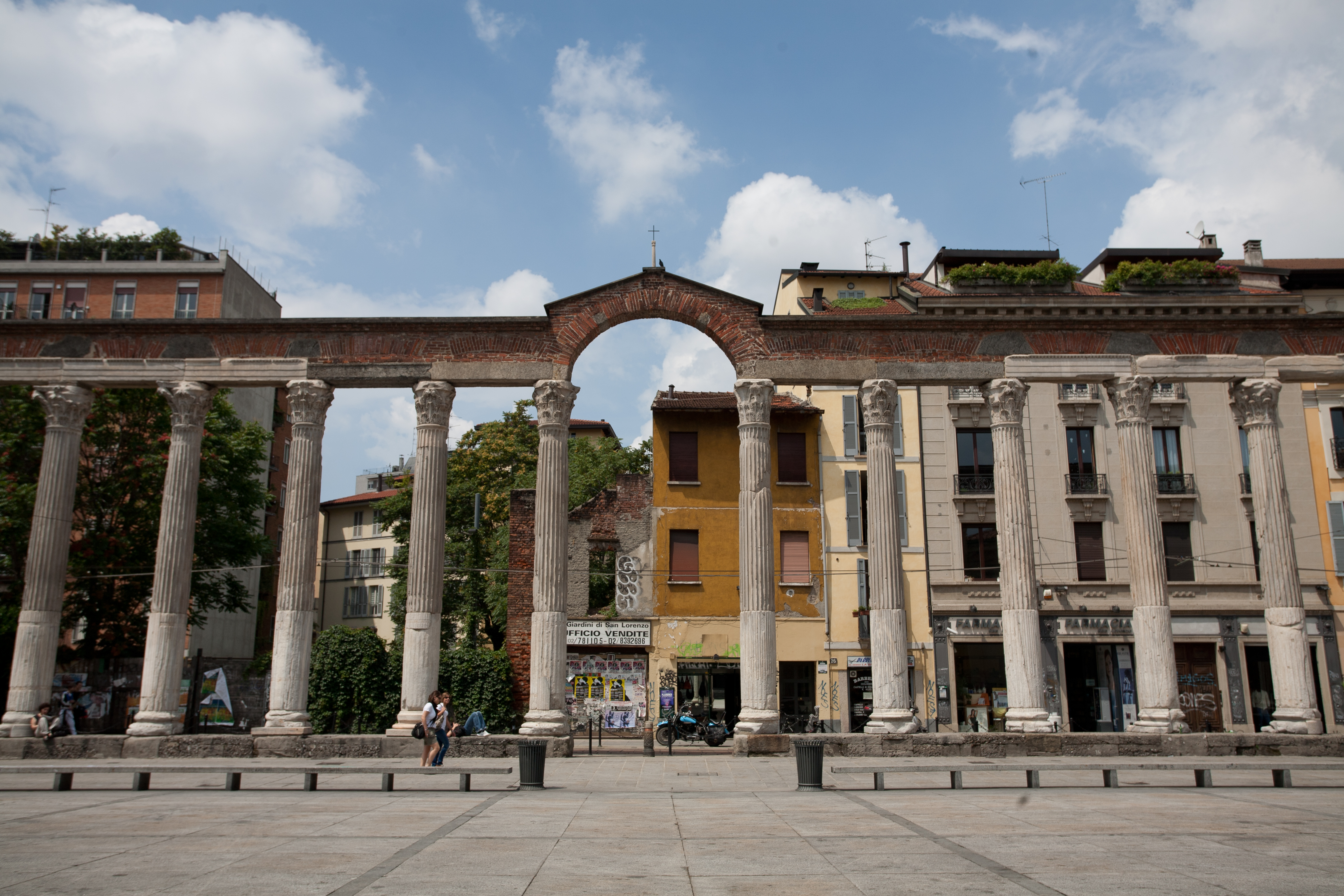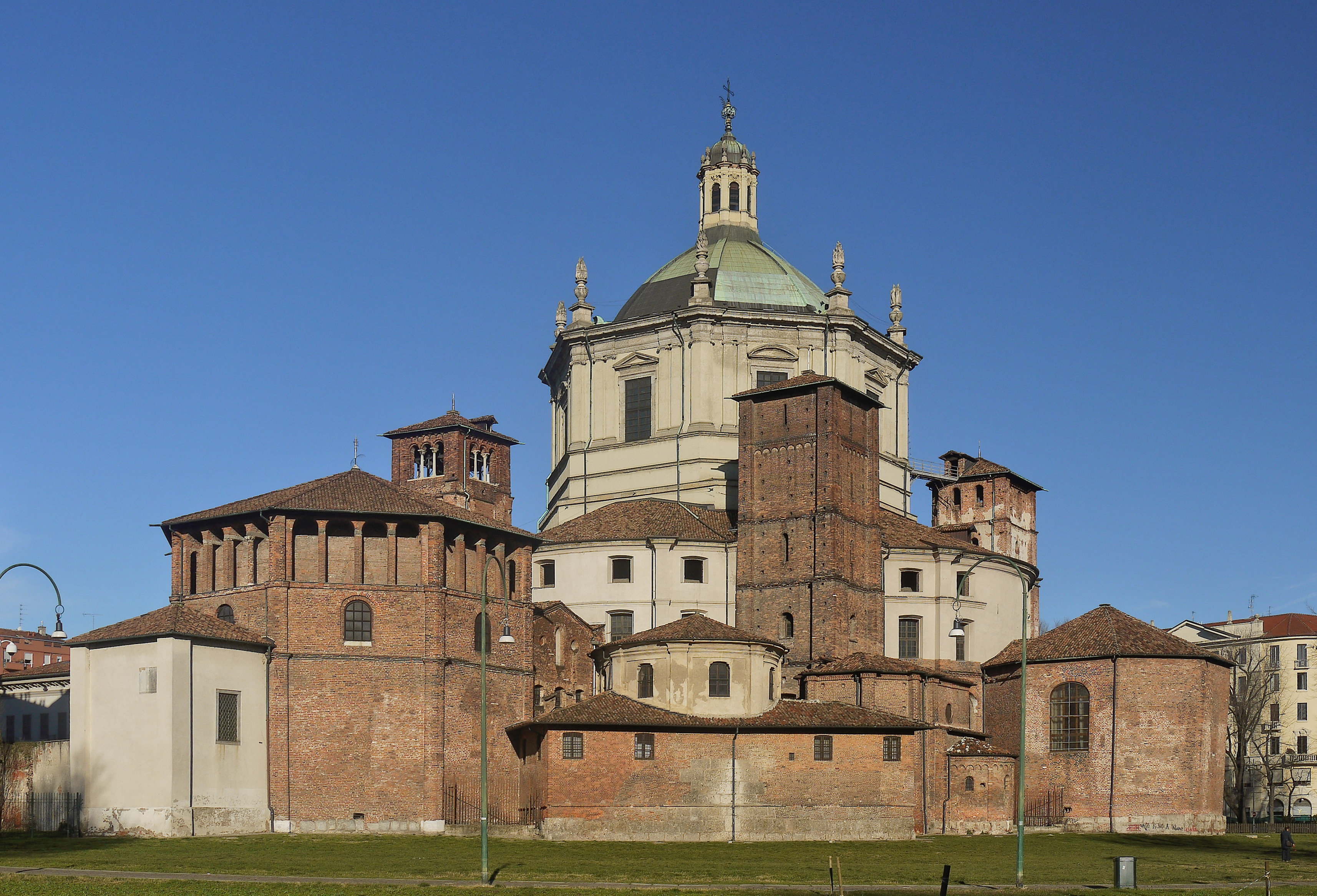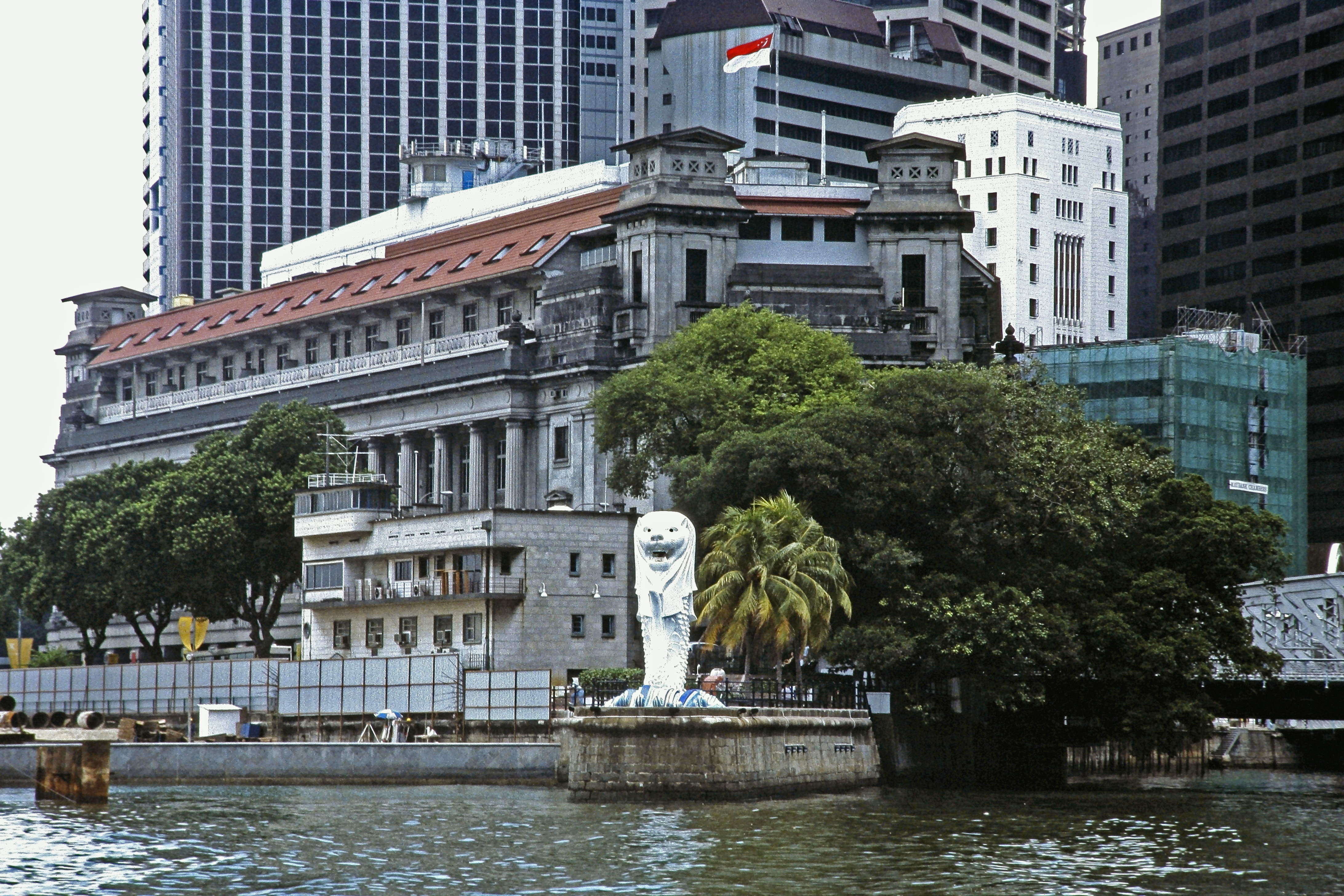|
Porta Ticinese (Medieval)
The Medieval Porta Ticinese (''Porta Ticinese Medievale'') is a gate of the former 12th-century Walls of Milan; it is located at the intersection of the Corso di Porta Ticinese and Via Edmondo de Amicis (running to west) and Via Molino di Armi (running to east) in the city center of Milan, region of Lombardy, Italy. This is one of the three remaining medieval gates of Milan. The others are Porta Nuova and the Pusterla di Sant'Ambrogio. Originally built in the twelfth century, this Gothic style, merlion-topped gate and tower stood on the inner side of a navigable moat (cerchio dei navigli) that ringed the city. The structures we see today were stripped of accumulating houses and refurbished as see them now in 1861 by Camillo Boito. He inserted the two lateral gothic arches flanking the original central passage. The canal was filled in over the last century creating the intersecting avenues of Amicis and Molion di Armi. As the city grew, by the 16th-century, a second moated set of ... [...More Info...] [...Related Items...] OR: [Wikipedia] [Google] [Baidu] |
Regions Of Italy
The regions of Italy ( it, regioni d'Italia) are the first-level administrative divisions of the Italian Republic, constituting its second NUTS administrative level. There are twenty regions, five of which have higher autonomy than the rest. Under the Italian Constitution, each region is an autonomous entity with defined powers. With the exception of the Aosta Valley (since 1945) and Friuli-Venezia Giulia (since 2018), each region is divided into a number of provinces (''province''). History During the Kingdom of Italy, regions were mere statistical districts of the central state. Under the Republic, they were granted a measure of political autonomy by the 1948 Italian Constitution. The original draft list comprised the Salento region (which was eventually included in Apulia); ''Friuli'' and ''Venezia Giulia'' were separate regions, and Basilicata was named ''Lucania''. Abruzzo and Molise were identified as separate regions in the first draft, but were later merged into ''Abru ... [...More Info...] [...Related Items...] OR: [Wikipedia] [Google] [Baidu] |
Camillo Boito
Camillo Boito (; 30 October 1836 – 28 June 1914) was an Italian architect and engineer, and a noted art critic, art historian and novelist. Biography Boito was born in Rome, the son of an Italian painter of miniatures. His mother was of Polish ancestry. He studied in Padua and then architecture at the Accademia di Belle Arti di Venezia (School of Fine Arts) in Venice. During his time there, he was influenced by Selvatico Estense, an architect who championed the study of medieval art in Italy. He taught architecture at the Venice School of Fine Arts until 1856 when he moved to Tuscany. His agitation against the Austrian domination of Venice pressured him to leave, despite his position as adjunct professor at the Academy. In Florence he begins to write for the journal ''lo Spettatore'' edited by Celestino Bianchi. In 1860, he was named professor of Superior Architecture at the Brera Academy in Milan. In Milan, he published for a number of journals, including ''Politecnico'', ... [...More Info...] [...Related Items...] OR: [Wikipedia] [Google] [Baidu] |
Tourist Attractions In Milan
Tourism is travel for pleasure or business; also the theory and practice of touring, the business of attracting, accommodating, and entertaining tourists, and the business of operating tours. The World Tourism Organization defines tourism more generally, in terms which go "beyond the common perception of tourism as being limited to holiday activity only", as people "travelling to and staying in places outside their usual environment for not more than one consecutive year for leisure and not less than 24 hours, business and other purposes". Tourism can be domestic (within the traveller's own country) or international, and international tourism has both incoming and outgoing implications on a country's balance of payments. Tourism numbers declined as a result of a strong economic slowdown (the late-2000s recession) between the second half of 2008 and the end of 2009, and in consequence of the outbreak of the 2009 H1N1 influenza virus, but slowly recovered until the COVID-19 p ... [...More Info...] [...Related Items...] OR: [Wikipedia] [Google] [Baidu] |
Wall Of Dolls, Milan
The Wall of Dolls o Muro delle bambole is an informal and changing art installation and memorial located, dedicated to remembering female victims of violence and murder, located on 2 Via Edmondo de Amicis just west of the Porta Ticinese (Medieval Gate of Milan), Medieval Porta Ticinese in central Milan, region of Lombardy, Italy. The monument, installed in 2014, consists of many, diverse dolls, many with the names of victims, hung on a metal wire grid support on a wall facing the busy Via Amicis. The idea was first proposed in 2013 by the singer and song-writer Jo Squillo, and supported by Giusy Versace and Francesca Carollo. The project attracted support from diverse organizations, artists, and students involved in tailor work for the School of San Giusto. The public is able to add their own dolls to the installation. In July a fire of unknown origin damaged the center of the exhibit. Similar projects have been proposed elsewhere, including Verona and Venice, the latter inaugura ... [...More Info...] [...Related Items...] OR: [Wikipedia] [Google] [Baidu] |
Colonne Di San Lorenzo
The Colonne di San Lorenzo or Columns of San Lorenzo is a group of ancient Roman ruins, located in front of the Basilica of San Lorenzo in central Milan, region of Lombardy, northern Italy. History The colonnade, consisting mainly of 16 tall Corinthian columns in a row, now fronts an open square. In the 4th century, the columns were moved here, after removal from a likely 2nd century pagan temple or public bath house structure. South of the columns, one of the medieval gates still has some Roman marble decoration in place. In the 16th century, in preparations for a celebratory entrance into Milan of the monarch King Phillip II of Spain, it was proposed to raze the colonnade to widen the route; Ferrante Gonzaga declined the suggestion. [...More Info...] [...Related Items...] OR: [Wikipedia] [Google] [Baidu] |
Basilica Of San Lorenzo, Milan
The Basilica of San Lorenzo Maggiore is a church in Milan, northern Italy. Located within the city's ring of canals, it was originally built in Roman times and subsequently rebuilt several times over a number of centuries. It is close to the mediaeval Ticino gate and is one of the oldest churches in Milan. It is near the city park called Basilicas Park, which includes both the Basilica of San Lorenzo and the Basilica of Sant'Eustorgio, as well as the Roman Colonne di San Lorenzo. History Origins The basilica was built between the late fourth and early fifth centuries. The exact date is uncertain, as are the name of who commissioned it and the circumstances of its foundation. According to some scholars San Lorenzo was erected to coincide with the “Basilica Portiana”, which was built by the “Augustus of the West” (Valentinian I or Valentinian II) to please the Bishop of Milan Auxentius (355–372) of the Arian faith. If this is true, San Lorenzo would have preceded the f ... [...More Info...] [...Related Items...] OR: [Wikipedia] [Google] [Baidu] |
Luigi Cagnola
Marchese Luigi Cagnola (9 June 1762 – 14 August 1833) was a Neoclassical Italian architect. Biography Cagnola was born in Milan. He was sent at the age of fourteen to the Clementine College at Rome, and afterwards studied at the University of Pavia. He was intended for the legal profession, but his passion for architecture was too strong, and after holding some government posts at Milan, he entered as a competitor for the construction of the Porta Orientale. His designs were commended, but were not selected on account of the expense their adoption would have involved. From that time Cagnola devoted himself entirely to architecture. After the death of his father he spent two years in Verona and Venice, studying the architectural structures of these cities. In 1806 he was called upon to erect a triumphal arch for the marriage of Eugene Beauharnais with the princess of Bavaria. The arch was of wood, but was of such beauty that it was resolved to carry it out in marble. The first ... [...More Info...] [...Related Items...] OR: [Wikipedia] [Google] [Baidu] |
Porta Ticinese
Porta Ticinese (formerly known as Porta Cicca, and during Napoleonic rule as Porta Marengo)Porta Cicca' (in Italian) is a former city gate of Milan, Italy. The gate, facing south-west, was first created with the Spanish walls of the city, in the 16th century, but the original structure was later demolished and replaced in the early 19th century. The name "Porta Ticinese" is used both to refer to the gate proper and to the surrounding district, part of the Zone 6 administrative division. In the same district there is also a medieval gate with the same name, although in common speech the name "Porta Ticinese" is usually assumed to refer to the 19th century gate. The gate of Porta Ticinese is one of the landmark buildings of Milan and a popular tourist attraction. The name "Porta Ticinese" means "Gate to the Ticino", referred to the Ticino river, that traverses the Po Valley south-west of Milan. The name "Porta Cicca" came about during the Spanish rule of Milan in the 16th century, ... [...More Info...] [...Related Items...] OR: [Wikipedia] [Google] [Baidu] |
Navigli
The navigli (; lmo, Navili ) are a system of interconnected canals in and around Milan, in the Italian region of Lombardy, dating back as far as the Middle Ages. The system consists of five canals: Naviglio Grande, Naviglio Pavese, Naviglio Martesana, Naviglio di Paderno, Naviglio di Bereguardo. The first three were connected through Milan via the ''Fossa Interna'', also known as the Inner Ring. The urban section of the Naviglio Martesana was covered over at the beginning of the 1930s, together with the entire Inner Ring, thus sounding the death knell for the north-eastern canals. Commercial carrying continued on the Naviglio Grande, but the decline was steady and by the 1960s a project of a fluvial port to reach the Po River and consequentially the Adriatic Sea through the canals was shelved for good. Today, the canals are mostly used for irrigation Irrigation (also referred to as watering) is the practice of applying controlled amounts of water to land to help grow Crop, ... [...More Info...] [...Related Items...] OR: [Wikipedia] [Google] [Baidu] |
Lombardy
Lombardy ( it, Lombardia, Lombard language, Lombard: ''Lombardia'' or ''Lumbardia' '') is an administrative regions of Italy, region of Italy that covers ; it is located in the northern-central part of the country and has a population of about 10 million people, constituting more than one-sixth of Italy's population. Over a fifth of the Italian gross domestic product (GDP) is produced in the region. The Lombardy region is located between the Alps mountain range and tributaries of the Po river, and includes Milan, the largest metropolitan area in the country, and among the largest in the European Union (EU). Of the fifty-eight UNESCO World Heritage Sites in Italy, eleven are in Lombardy. Virgil, Pliny the Elder, Ambrose, Gerolamo Cardano, Caravaggio, Claudio Monteverdi, Antonio Stradivari, Cesare Beccaria, Alessandro Volta and Alessandro Manzoni; and popes Pope John XXIII, John XXIII and Pope Paul VI, Paul VI originated in the area of modern-day Lombardy region. Etymology The name ... [...More Info...] [...Related Items...] OR: [Wikipedia] [Google] [Baidu] |
Merlion
The Merlion () is the official mascot of Singapore. It is depicted as a mythical creature with the head of a lion and the body of a fish. Being of prominent symbolic nature to Singapore and Singaporeans in general, it is widely used to represent both the city state and its people in sports teams, advertising, branding, tourism and as a national personification. The Merlion was first used in Singapore as the logo for the tourism board. Its name combines " mer", meaning the sea, and "lion". The fish body represents Singapore's origin as a fishing village when it was called ''Temasek'', which means "sea town" in Javanese. The lion head represents Singapore's original name—''Singapura''—meaning "lion city" or "kota singa". The symbol was designed by Alec Fraser-Brunner, a member of the Souvenir Committee and curator of the Van Kleef Aquarium, for the logo of the Singapore Tourism Board (STB) in use from 26 March, 1964 to 1997 and has been its trademarked symbol since 20 Jul ... [...More Info...] [...Related Items...] OR: [Wikipedia] [Google] [Baidu] |
Gothic Architecture
Gothic architecture (or pointed architecture) is an architectural style that was prevalent in Europe from the late 12th to the 16th century, during the High and Late Middle Ages, surviving into the 17th and 18th centuries in some areas. It evolved from Romanesque architecture and was succeeded by Renaissance architecture. It originated in the Île-de-France and Picardy regions of northern France. The style at the time was sometimes known as ''opus Francigenum'' (lit. French work); the term ''Gothic'' was first applied contemptuously during the later Renaissance, by those ambitious to revive the architecture of classical antiquity. The defining design element of Gothic architecture is the pointed or ogival arch. The use of the pointed arch in turn led to the development of the pointed rib vault and flying buttresses, combined with elaborate tracery and stained glass windows. At the Abbey of Saint-Denis, near Paris, the choir was reconstructed between 1140 and 1144, draw ... [...More Info...] [...Related Items...] OR: [Wikipedia] [Google] [Baidu] |








.jpg)